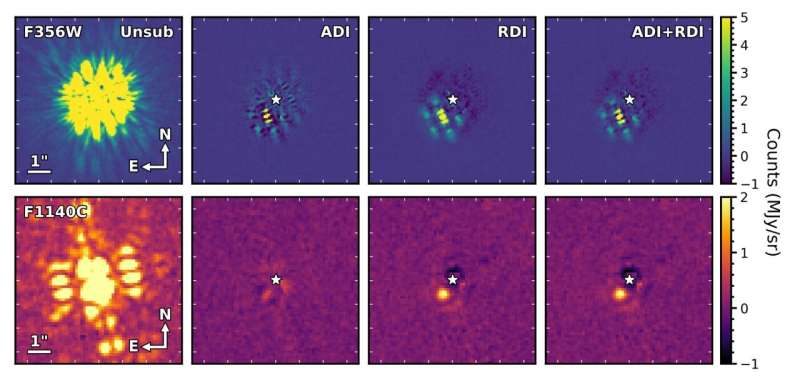Astronomers from the University of Exeter have led the effort to capture the first-ever direct image of an exoplanet using the pioneering James Webb Space Telescope.
The remarkable image shows the gas giant HIP65426b, about five to 10 times the mass of Jupiter and formed 15–20 million years ago.
The observations were led by Professor Sasha Hinkley from the University of Exeter, in collaboration with an international team of researchers.
Professor Hinkley says that "this is a transformative moment, not only for Webb but also for astronomy generally. With Webb, there's a whole new set of physics we can do to look at the chemistries of these planets."
Astronomers discovered the planet in 2017 using the SPHERE instrument on the European Southern Observatory's Very Large Telescope in Chile. These previous images of the planet were produced using short infrared wavelengths of light, and covered only a relatively narrow range of the overall emission from the planet.
The presence of most exoplanets has been only inferred using indirect methods, such as the transit method in which some of the host star's light is blocked by a planet passing in front. However, taking direct images of exoplanets has proved more challenging, as the host stars around which the planets orbit are so much brighter, in this case several thousand times to more than ten-thousand times brighter.
For the new image, the research team used mid- and thermal-infrared light, revealing new details that ground-based telescopes would not be able to collect due to the intrinsic infrared glow of the Earth's atmosphere. These include details about the chemical composition of the planet's atmosphere , which appears red due to minerals, called silicates, forming fine dust in the atmosphere.
The team believe the image shows how the James Webb Telescope's powerful infrared gaze can capture more worlds beyond our solar system, pointing the way to future observations that will reveal more information than ever before about exoplanetary systems.
Since the planet is about 100 times farther from its host star than Earth is from the Sun, it is sufficiently distant from the star that Webb can separate the planet from the star in the image. JWST's Near Infrared Camera (NIRCam) and Mid-Infrared Instrument (MIRI) are both equipped with coronagraphs, which are sets of tiny masks that block out starlight, enabling Webb to take direct images of certain exoplanets like this one.
"It was really impressive how well the JWST coronagraphs worked to suppress the light of the host star," Hinkley said.
Explore further



